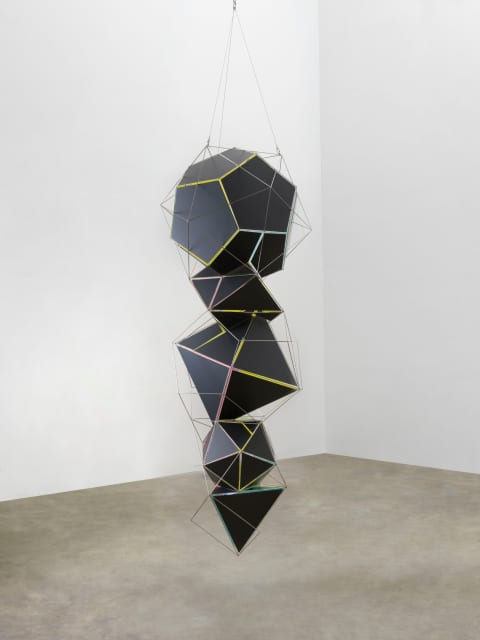Suspended from the ceiling, a column of five polyhedrons, constructed from coloured glass and mirrors, hang to a point just above the ground. The glass solids are contained within a stainless-steel framework that draws the outlines of the same polyhedrons, but in a different order.
All the forms in this work are Platonic solids, the only geometrical forms that can be produced using identical, regular polygons for faces. These five forms – the tetrahedron, octahedron, icosahedron, dodecahedron, and cube – were famously described by Plato in the Timaeus as elemental forms, and they have played an important role in the history of philosophy, religion, science, and art ever since. The seventeenth-century astronomer Johannes Kepler, for example, proposed a model of the solar system, which he termed the harmony of the spheres, based on the five forms embedded concentrically around the sun.
Half of each polyhedron here is made from coloured glass panes, while the other half is formed from panels of mirror with their black backs facing outwards. The colours correspond to the primary tones of the subtractive colour model commonly used in printing: cyan, yellow, and magenta. Where the panes overlap, they mix to form a surprising range of colours, compounded by the reflections in the mirrors. As the viewers move about the space and take on new perspectives, the work seems to constantly change and evolve.
The work has a pendant, the similarly titled Probability of conscious gravitation, which forms a stalagmite to this work’s stalactite.






